Vitali Vitaliev, who was born and grew up in Ukraine, offers a moving tribute to its railways which has stopped the war-torn country from falling apart.
In this article:
Vitali Vitaliev, who was born and grew up in Ukraine, offers a moving tribute to its railways which has stopped the war-torn country from falling apart.
In this article:
- The resilience of Ukraine's railways, which play a crucial role in maintaining the country's unity amidst the war.
- Russian attacks on Ukrainian railways underscore the strategic and symbolic significance of these infrastructure targets.
- Despite the destruction, Ukrainian Railways has impressively maintained punctuality and efficiency.
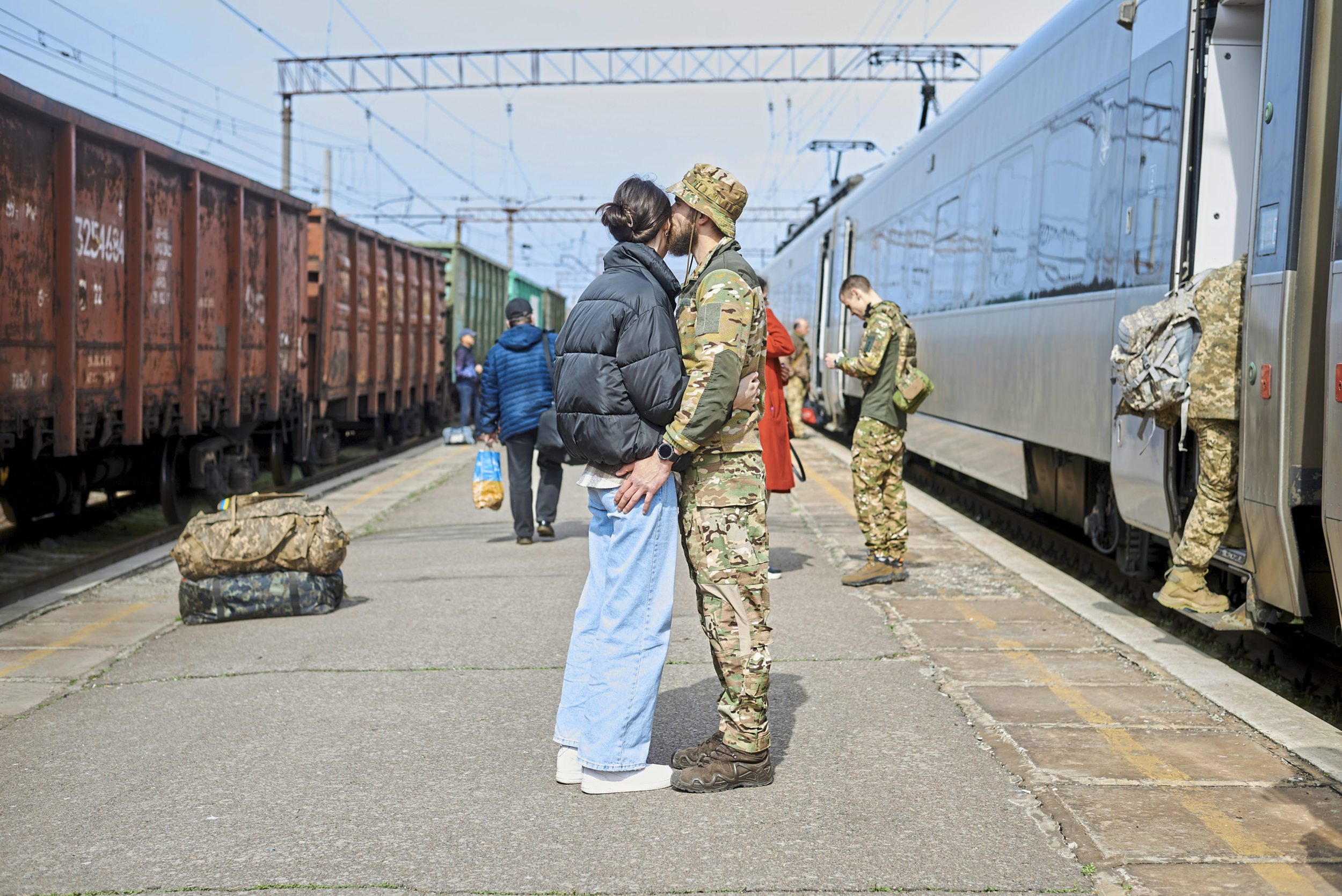
As a schoolboy in the Soviet Ukraine’s second largest city of Kharkiv (it was then spelled Kharkov, in line with the all-permeating ‘Russification’), I was a railway buff.
I collected maps and train timetables. I treasured a tarred wooden chip, covertly peeled off a freight car at a railway station. It was kept in a small wooden box, which I would open and sniff from time to time. It smelled of journeys and adventures.
At school, they would tease me for carrying this fancy snuffbox with me, and nicknamed me Engine Driver. I was secretly proud of this nickname.
Playing truant, I used to escape to the city’s main railway terminal. It was an ugly and pompous building, decorated with frescos in the best traditions of socialist realism - heroic workers and peasant women with bulging eyes, clutching red banners in their sinewy, abnormally muscular hands.
But all of those didn’t matter. I would stand on a shabby wooden footbridge hanging precariously above the dirty tracks, and gape at the passing trains below for hours on end, until my head started spinning and I had the illusion that it was I who was moving, floating in the air above immobile trains...
My other escape destination was Children’s Railway in Gorky Park, where all the ‘staff’ - conductors, stationmasters, and even engine drivers - were kids like me.
I would board a compact custom-made carriage, which would rattle away unhurriedly from station Park to the only other station (Lesopark) and back - an eight-kilometre ride, which for me was a worthy substitute for all the great and firmly-out-of-my-reach railway journeys of the world.
Learning of the recent bombing by the Russians of my beloved Children’s Railway felt like having a chunk of my childhood taken away.
And the fact that they did it on the May 19, which used to be the Soviet kids’ official holiday (the Young Pioneers’ Day), made the attack even more cynical and destructive.
The suburban town of Liubotyn was special for me - and not just because it was the place to where my grandparents would often take me for summer holidays.
It was to Liubotyn station that I and my best mate Sasha once ventured on our lives’ first real (meaning without the adults) train ride.
That brazen venture had been planned and undertaken in utter secrecy, under cover of a normal school day. It was just a 40-minute jaunt on a shuttle train, but to us it felt no less dangerous and revealing than the first round-the-world voyage of Magellan.
We got off at Liubotyn, then sleepy and unmistakeably rural, bought a couple of wrinkled meat pies at a station kiosk, and got back on the train.
The return trip was both uneventful and unforgettable. Looking through the window of the moving (or rather crawling) train, we were munching meat pies and feeling free!
At times, I can still feel the oily smack of those cheap - and utterly delicious - meat pies on my lips.
But that semi-forgotten taste grew bitter when I heard of the Russian ‘targeted rocket’ hitting the campus of the Liubotyn’s Railway Transport Lyceum.
The key word here is ‘targeted’, meaning that the attack on the ‘lyceum’, where would-be employees of Ukrainian Railways (UZ) are trained, was not accidental.
The Russians must have been aware that since the start of the invasion two and a half years ago, UZ has been popularly known as ‘Ukraine’s Second Army’. To understand why, let’s have a look at the statistics from the Ukrainian Railways’ website and other sources:
- Ukrainian Railways (UZ) is Ukraine’s largest enterprise, employing about 187,000 people and serving as the primary logistics network for transportation of cargo and passengers, both in domestic and international traffic. Its total working mileage is over 22,000km (13,670 miles) of 1520mm gauge, and 130km (81 miles) of Europe’s longest 750mm gauge.
- Ten thousand UZ professionals are now fighting the aggressor in the ranks of the Ukrainian Armed Forces.
- Since the start of the full-scale Russian invasion in February 2022, 462 railway workers have been killed while carrying out their duties.
- Since the onset of the invasion, UZ has evacuated over four million passengers, including one million children, and 120,000 animals.
Now you will understand why destroying a railway workers’ college (or a ‘Children’s Railway’, for that matter), for the aggressor was on a par with bombing a military school, training future front-line fighters.
Kramatorsk is a smoky industrial city in Donbass, and a major railway junction.
According to Google Travel, I can now reach Kramatorsk by rail from Hertfordshire (where I live) in just… 56 hours and 35 minutes.
That highly hypothetical trip would entail 11 train changes. The important thing, however, is that the long-suffering city is again reachable by rail.
Yes! Intercity UZ trains to Kramatorsk were fully restored just six months after the attack, which killed 60 people (both passengers and railway workers) and nearly bombed the station out of existence.
Kramatorsk is only 140 miles away from my native Kharkiv, and I never had a chance to visit it. But I know that my late granddad Mikhail worked there at the railway station’s ticket office in the 1920s.
The Russian rockets had therefore blown up a piece of my family history, too.
The usefulness of old timetables
My childhood and youth were inseparable from Ukraine’s railways, which at that time were part of the Soviet Railways network, divided into several dozen self-administered ‘doroghi’ (railway branches). The HQ of the Southern (Yuzhnaya) ‘doroga’ was in Kharkiv, right opposite the railway terminal.
Ukraine’s railways took me on holidays to the Crimea, or on shopping and theatre-going visits to Moscow.
As a second-year student at Kharkiv University, I took a summer job as a conductor of the train that ran between Novorossiysk on the Russian Black Sea coast to Kaliningrad in the Baltics - a 48-hour journey via Kharkiv, from where the train originated.
In modern geographical terms, it went across four independent states: Ukraine, Russia, Belarus, and Lithuania. As such, it has now joined the long list of ‘ghost trains’, extinguished by the ongoing war.
In my memories, however, those no-longer-existing trains continue to run - particularly when I leaf through the piles of old train timetables, which I still assiduously collect.
What’s the use of outdated train timetables, you may ask?
Well, it all depends on how you read them and what you can see behind the seemingly impertinent dates and times.
Here’s the ‘gem’ of my collection - Taschenfahrplan für die Ostliche Ukraine (Pocket Timetable for Eastern Ukraine), published in August 1942 during the 1941-43 Nazi occupation of Ukraine - strangely relevant to the present.
The most striking feature of this faded brochure is how ‘normal’ it looks at the first glance: a neat folding map at the front, impeccable tables of times and distances, and so on.
It takes another good look to notice that the map shows the through route from Berlin Zoo to my native Kharkiv - referred to as Charkow Hauptbahnhof (or Hbf) - uninterrupted by any borders.
You can also trace the 400 3356 train (‘Zug Nr 3356’) from Charkow to Slawjansk (Slovyansk in the Ukrainian transliteration) in Donbass, to where trains from today’s Kharkiv are running again. After months of bloody battles, Slovyansk ended up in the Ukraine-administered part of Donbass and not in the Russian-controlled ‘Donetsk People’s Republic’ - what a mess.
According to the same 1942 Taschenfahrplan, at 4.40 that very Zug used to stop for two minutes at Komarowka - a suburban village on the way to Liubotyn (see above).
For some reason, looking at the village’s name transliterated from Russian into German (in Ukrainian, it would be Komarivka) makes me feel the horror of the foreign occupation of my native land, similar to the invasion, from which it is suffering now.
My more recent, and much less sinister, ‘gem’ is the 2014 Staff-Only Service Timetable for Engine Drivers for Ukraine’s Yuzhnaya (Southern) Doroga (railway branch).
Inserted in the book are a note, written (in Russian) probably by an engine driver - “Kharkiv - 23.33; Northern Post - 23.43” - and the printed timetable of all train departures from Kharkiv (not Charkow, thank God) passenger terminal.
A fascinating insight can be found on pages 67-69 of that book, chronicling the route of train 56 from Sumi (via Kharkiv) to Simferopol in the Crimea.
The timetable was published in 2014, the same year the Crimean peninsula was annexed by Russia, but obviously prior to its March 2014 annexation, after which all direct train connections to the Crimea from Ukraine were terminated.
The same fate befell the relatively clean and comfortable ‘firmenniy’ (special) overnight train number 20 from Kharkiv to Moscow - another case of the painful political reality made crystal-clear by the seemingly useless ten-year-old book of train schedules.
As for Ukraine’s trains of today, their timetables can be easily accessed via the UZ app (in Ukrainian and English) and via the European Rail Timetable, published quarterly in the UK.
Its summer 2024 edition features (among others) an Intercity Kyiv-Kharkiv train, which now covers the distance of 493km (306 miles) in just four and a half hours.
The older version of that train was very familiar to me. Many years ago, it was a clean and comfortable East German-built overnighter, and the journey took eight hours - almost twice as long.
I would travel to Kyiv fairly often to visit my relatives. Yet my most memorable foray there was to watch the second leg of the European Super Cup Final in October 1975, when Dynamo Kyiv beat Bayern Munich 2-0 and won the Cup.
We celebrated the victory all night - roaming the streets of Kyiv and chanting “Dynamo! Dynamo!”
Those gleeful distant chants keep are still echoing in my ears.
Certainty in uncertain times
What is it like to travel by train in the war-torn Ukraine these days?
Unable, for a number of reasons, to ride the trains of my youth (my last experience of Ukrainian railways was in 1994, when I returned to Ukraine with a Channel 4 TV crew to film a documentary The Train to Freedom, which I myself wrote and presented), I have to rely on the recent impressions of my university friend Slava, now living in New York and working as a translator for the UN.
“A year and a half into the war, we had to travel to Kharkiv for an urgent family-related reason. We flew from Newark to Vienna, then to Budapest, from where we took a train to Kyiv.
“The train from Kyiv to Kharkiv was an Intercity train that gets you to Kharkiv in less than five hours instead of the usual seven.
“Our Hyundai car was air-conditioned, with spacious reclining seats and lots of legroom. The food and drinks that I had ordered in advanced via the excellent UZ app was brought to us shortly after departure. We arrived in Kharkiv on the dot - exactly at five in the morning, right when the city curfew ends.
“For our return trip to Kyiv, we used the Intercity again and were not disappointed.
“In Kyiv we stayed overnight at a hotel before boarding a Ukrainian Railways train to Kishinev (Chisinau).
“When we arrived at Kyiv station, an air raid siren went off and the police started rushing people to the shelter. I said to an officer that we would miss our train if we went to the shelter, and he allowed us to go to the platform.
“The train was there. It departed on time. Our Sleeper car and compartment were what I expected. There were two beds with a table in between. The train arrived in Kishinev as scheduled. Later that day we took a plane to Milan and then back to New York.
“It was a very sad trip. We saw our beloved Kharkiv mutilated by Putin. We attended the funeral of a close relative. We tried to get used to the frequent air raid sirens and the sounds of explosions.
“Still, there were some nice moments. Among them was travelling with Ukrainian Railways. It is good to have something certain in uncertain times.”
“Owing to the ongoing conflict, all rail services are subject to change on a short notice,” warns the European Rail Timetable at the end of its short entry on the general state of Ukraine’s railways.
UZ, Ukraine’s heroic ‘second army’, has been doing everything in its power to keep such changes to the minimum, with 94% of all trains leaving and arriving on schedule - a figure that can be envied not just by the UK (79%), but even by the traditionally punctual and peaceful Switzerland (92.5%).
In the words of my old acquaintance, British actor and comedian Stephen Fry, who recently travelled (by train) to Ukraine on the invitation of President Zelensky: “The greatness of Ukrainian Railways is not in providing safe travels for a handful of foreigners from the West, but in how they had managed to transport to safe places and away from the enemy one million Ukrainian children, with 94% of trains leaving and arriving without delays - something well beyond British Rail’s imagination!”
So, what is the secret behind the incredible war-time performance of UZ, transformed by the war from an organisation to a phenomenon?
I addressed this question to Anastasiya Zolotariova, the 28-year-old head of UZ’s Internal and External Passenger Communications Department.
“The secret? It may be the feeling of being part of the great mission UZ have been entrusted with - to be the country’s main life-saving artery and its vital and victorious ‘second army’,” she tells me.
All of that has been achieved by ordinary people: from train conductors and track maintenance workers, repairing damaged rails and sleepers under the barrage of enemy fire, to managers at all levels, not afraid to take responsibility for difficult, unpopular and at times near-impossible decisions, which have eventually succeeded in saving the lives of millions of Ukrainians.
And Ukrainians are grateful. Their social media posts are full of thanks to their “beautiful and resilient railway system”, their “lifeline during the war” and “the fastest way to get home”.
The latest comment referred to the so-called “trains of life”, or “iron diplomacy trains”, connecting Ukraine with the rest of Europe via Hungary, Poland and Moldova.
My son, a Canada-based IT professional who often travels to Ukraine, told me about the exhilarating atmosphere on those Ukraine-bound trains, bringing home hundreds of the unwilling refugees, mostly women and children (including the babies, born in exile on the way to meet their Ukrainian fighter fathers for the first time).
The difference between Ukrainian refugees and other reluctant exiles is that Ukrainians are desperate to return.
‘Trains of life’ in this context sounds like an appropriate parenthesis, although I would be inclined to call every UZ train these days - be it passenger or freight - the ultimate Train of Life. It is our common duty to keep this Train running smoothly and freely.
Railways may be made of steel, but ordinary people run them. To paraphrase President Zelensky’s brave and now-famous statement (“I don’t need a lift, I need ammunition”), UZ does not need patronage, but it does need a strong and friendly helping hand.
SUPPORT KIT FOR KYIV!
- Make donations and for more information on the initiative
- For industry colleagues, to find out more about how you can support colleagues at Ukrainian Railways, contact [email protected]
- View a list of corporate donors and to find out more about Rail Partners with Ukraine and #KitForKyiv
- Kit for Kyiv is being run in conjunction with the international Global Ukraine Rail Task Force, with all donations in Sterling going directly into the campaign.
Login to continue reading
Or register with RAIL to keep up-to-date with the latest news, insight and opinion.

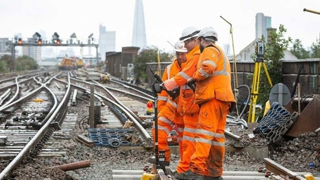
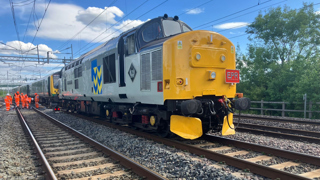
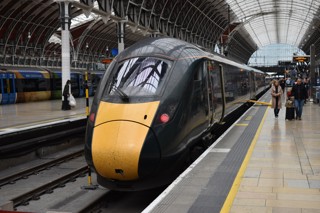
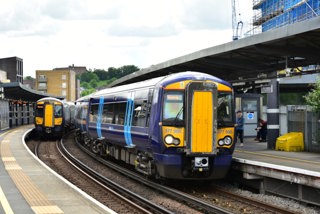
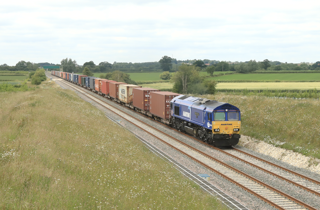










Login to comment
Comments
No comments have been made yet.